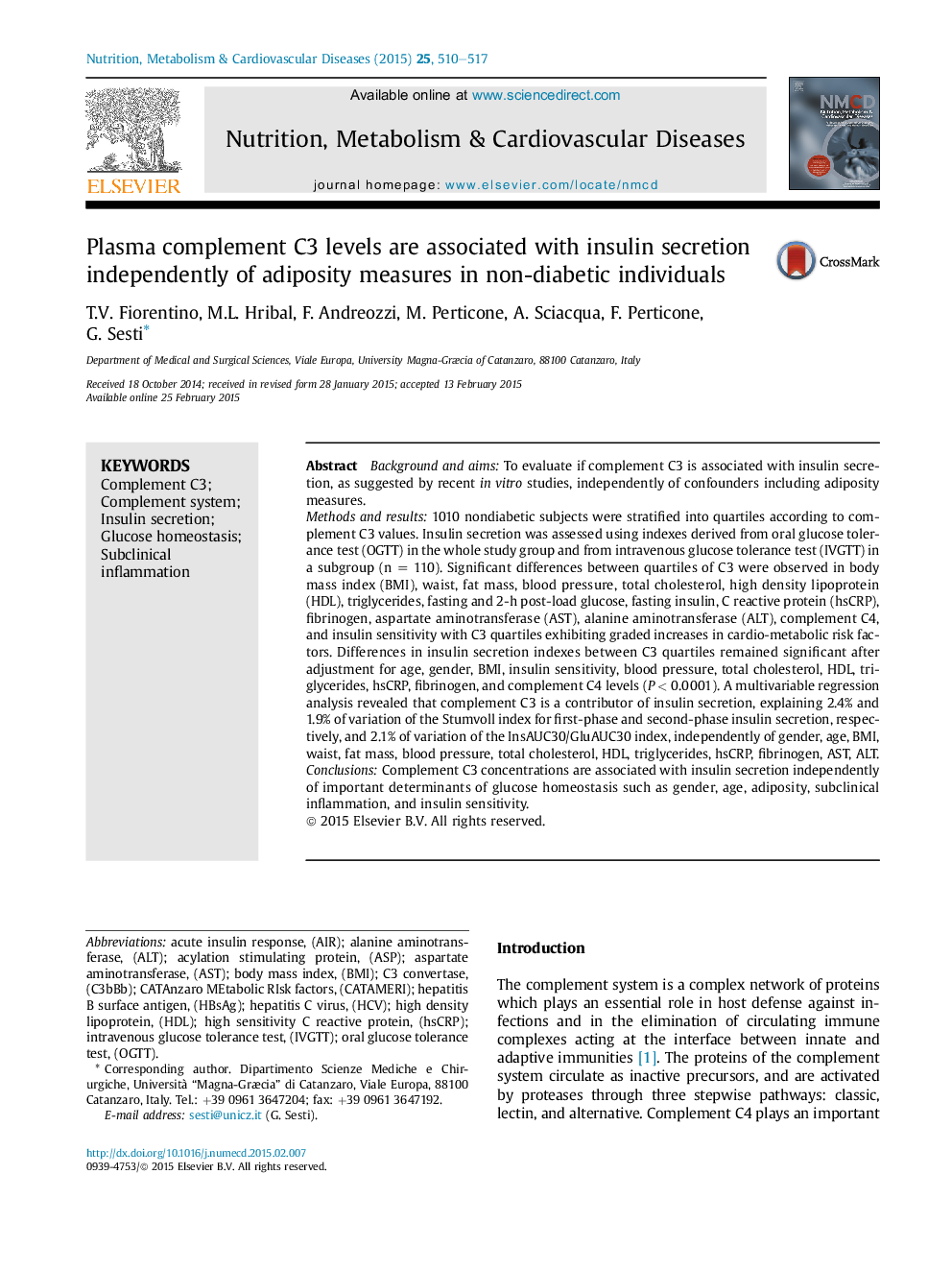| Article ID | Journal | Published Year | Pages | File Type |
|---|---|---|---|---|
| 3001820 | Nutrition, Metabolism and Cardiovascular Diseases | 2015 | 8 Pages |
•Complement C3 concentrations are associated with insulin secretion in humans.•This association is independent of important determinants of glucose homeostasis.•This suggest that complement C3 may play a role in type 2 diabetes pathogenesis.
Background and aimsTo evaluate if complement C3 is associated with insulin secretion, as suggested by recent in vitro studies, independently of confounders including adiposity measures.Methods and results1010 nondiabetic subjects were stratified into quartiles according to complement C3 values. Insulin secretion was assessed using indexes derived from oral glucose tolerance test (OGTT) in the whole study group and from intravenous glucose tolerance test (IVGTT) in a subgroup (n = 110). Significant differences between quartiles of C3 were observed in body mass index (BMI), waist, fat mass, blood pressure, total cholesterol, high density lipoprotein (HDL), triglycerides, fasting and 2-h post-load glucose, fasting insulin, C reactive protein (hsCRP), fibrinogen, aspartate aminotransferase (AST), alanine aminotransferase (ALT), complement C4, and insulin sensitivity with C3 quartiles exhibiting graded increases in cardio-metabolic risk factors. Differences in insulin secretion indexes between C3 quartiles remained significant after adjustment for age, gender, BMI, insulin sensitivity, blood pressure, total cholesterol, HDL, triglycerides, hsCRP, fibrinogen, and complement C4 levels (P < 0.0001). A multivariable regression analysis revealed that complement C3 is a contributor of insulin secretion, explaining 2.4% and 1.9% of variation of the Stumvoll index for first-phase and second-phase insulin secretion, respectively, and 2.1% of variation of the InsAUC30/GluAUC30 index, independently of gender, age, BMI, waist, fat mass, blood pressure, total cholesterol, HDL, triglycerides, hsCRP, fibrinogen, AST, ALT.ConclusionsComplement C3 concentrations are associated with insulin secretion independently of important determinants of glucose homeostasis such as gender, age, adiposity, subclinical inflammation, and insulin sensitivity.
